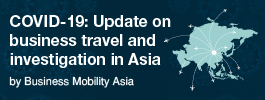How to assess Impact Investing Funds

Impact investment funds are set up to make a positive environmental, social or governance impact while returning a profit for investors. Before investing in an impact fund, investors should follow a process of due diligence, make sure its people-centred and fully understand the governance structure of the fund.
How to assess Impact Investing Funds:
First is Process, measured by the questions potential investors should be asking about an impact fund. Second is People, measured by personality tests and knowing the fund managers background, track record and even personal net-worth vital before investing. The last is Governance, which is the responsibility between investors and fund managers and their aligning interests.
Impact investment funds are set up to make a positive environmental, social or governance impact while returning a profit to investors. Before investing in an impact fund, investors should follow a process of due diligence, make sure its people-centred and fully understand the governance structure of the fund.
Going beyond the glossy brochures and unregulated annual reports of impact funds, leading impact investors shared their critical insights for how to assess impact investment funds at the 35th TBLI Conference (Triple Bottom Line Investing) Forum held in Zurich, Switzerland on 12-13 June.
In a panel discussion between Melissa Kang, founder and managing partner of Jupiter Impact Partners, David Newman, co-founder of Delio, Eva Foust Yazhari, founder of Beyond Capital Fund and Audrey Selian, director of Rianta Capital, the three areas of processes, people and governance formed a triple framework for assessing funds.
Process :The questions a potential investor should be asking about an impact fund
“I like to take a very systematic approach. You need to separate what the fund manager tells you versus what they don’t tell you,” said Melissa Kang founder and managing partner of Singapore based Jupiter Impact Partners.
“Firstly, we need to ascertain whether the country has a sustainable funding gap. Impact funds are patient capital that are set up for the long term. If the funding gap is solved in three years then there is no business anymore,” she continues. .
“Second in regard to the process, everybody writes impressive investment guidelines. But you actually need to talk to the portfolio companies in the pipeline and those that have already been invested in and ask how have the investors been operating. Then you can reverse check and see if the investors did what they said in the guidelines. It’s actually quite common for the parties to only write the Investment Contract IC after the investment.” said Kang. .
David Newman, co-founder of Delio, an infrastructure platform to digitalise private asset activities, advised on the questions an investor should be asking before investing in an impact fund: .
“What is the governance structure in the firm; is it one or two people that have all the authority or are there processes in place to control that. How much risk are they taking to reach their impact; is it only one or two outside bets that will deliver on the ethos, or is it going to be diversifying in a balanced way?” Newman explains. .
“It’s not just what’s a good impact firm, it’s what am I investing for, how does it meet my goal?” .
“Many first time fund managers add intentionality afterwards. So processes are important due to the propensity of first time fund managers.” Newman said. .
Eva Foust Yazhari, founder of Beyond Capital Fund in Switzerland, which is currently expecting a 2-3x return on their portfolio, with a 27% return on investments (ROI), stated her methodology. .
“The process doesn’t have to be different from traditional financial models. But we have to add the analysis of social impact on top. The funds that do the best job are as rigorous as any large institution would be, even for smaller investments. This is so that the larger funds can be attracted to these businesses due to our thorough due diligence processes. My view is that it is all about people.” Yazhari said. .
“Checking references is a very important component and is not just a tick-box exercise. Five minutes on the phone asking the right questions can find you the answers you want to know.” Yazhari continues. .
Audrey Selian, director of Rianta Capital in Zurich, Switzerland whose largest fund was launched nine years ago and is now worth $4 million and achieved a 4.5% ROI, commented that, “adherence to metrics protocols doesn’t get you deal flow or access, it’s helpful for a sense of application.” .
“The impact metrics is a discovery process that will change in 10 years. There is a joint journey,” Selian said.
People: When assessing impact investment funds, personality tests and knowing the fund managers background, track record and even personal net-worth are vital before investing
Yazhari commented that “there are inherent tensions around liquidity and impact investing, certain fund managers are primarily concerned with exits. However, we can’t do that with a company that has to develop their market, which is working in the last mile, or has other needs such as educating the consumers about the impact. Investors don’t like if you mismanage their expectations, but if they know that they are investing longer than the typical private equity investment, they they’ll be comfortable.”
Kang added that, “many people make the mistake of wanting to invest in the general partner (GP) of the fund. However, it is important to ascertain the wealth of the GP. If he has no wealth, then he is not a good investor. At the same time, you don’t want the GP to be too wealthy as we need hungry investors that will have the long term hunger needed to make the fund work.”
“My view is that investors who want liquidity, impact investing is not the right platform for them as Impact Investors needs to incorporate ESG,” Kang adds.
“Capital must be patient. Serious investors for impact need to make the adjustment so that they can manage the illiquidity of that asset class. Every impact fund will talk about theory of change, but there is a need to execute the change” said Kang.
“A very important consideration is to look at incentive structure of fund manager. What are the incentives for the fund manager, is there anything tied to impact not just the financial return?” commented Kang.
Newman focussed on the issue of liquidity exclaiming that, “We should probably look to what’s going on in the non-impact private markets, where there is such an active secondary market now as well. Big institutional players are starting to create liquidity for the Limited Partners (LP) and technology plays a massive role in helping standardise the information, standardise the excess and helping to create markets.”
Although we are a very long way from it, I think that will become the point of liquidity, rather than just waiting for the underlying portfolio company to make liquidity.” Newman adds.
Governance of funds: The responsibility between investors and fund managers and how to align interests
“I think a lot of the governance issues gets teased out in the operational due diligence.” Yazhari commented, and suggested key questions: “How is the team incentivised? Who sits on the investment committee? Who are the key decision makers? Is there a key person clause? A checklist is quite a simple and effective method allows for comparison, particularly in regard to operations.”
Kang offered “some simple tips in relation to corporate governance. Avoid tax jurisdictions. Who is the fund’s lawyer? Is he a buyout fund lawyer? If so, don’t go with him as the lawyer will be pushing the GP to buyout, which has no synergy with impact investing.”
“How to fire the GP? Does the GP have skin in the game? If so, where did his money come from?”
“What is the exit path strategy? Need to assess their road to mergers and acquisitions. Some just want to sell to the highest bidder.”
“On one occasion with a company in Cambodia, a Chinese SOE was the largest bidder, but shareholders voted against and sold it to another company at a lower price which had a proven ESG track record.” Kang explained.
“However, with limited risk we also have a limited say. Demanding higher barriers may not work for a fund. We ask for transparency on exits and disclosure as we are bound by confidentiality; what work have they done in regards to KYB, that information should be privy to the buyer.”
“Changing the ESG officer is a sign of ESG challenges in the portfolio. Skin in the game most important for investment committees rather than independent directors.” Kang said.
Similarly, Yazhari added that it is “important to understand the power dynamics of a fund. My investment committee is heavily involved in helping me make decisions. Understanding what that power dynamic is will help you feel comfortable investing in that fund. I don’t think there is a market standard for how many people are sitting in the investment committee.”
“Take a look at the transaction, and then take a look at the next transaction later down the line. Is it approved straight after its been presented or has there been minutes of a meeting before the investment decision has been made? How fast is the decision made after the executive presents it? Newman said.
“I’ve never seen negatives in report. No regulation for reporting downsides in non-financials.”
Meanwhile Selian said “We are a family office so we are an LP. We keep it super simple and only identify two or three metrics as well as annual reports, not largely broadcasting beyond the family office.”
“Entrepreneurs tend to take their inputs and multiply it by five. We need verification of the end beneficiary.”
“The impact funds won’t tell you the indirect market inefficiencies or distortions to the markets, companies affected or subsidies introduced due to the impact of the fund. We need a system for reporting cases where capital has been injected and it’s not had its intended consequences.” Said Selian.
Kang explained that the best way to assess the impact of a fund is to “check the ESG report and look for a material breach.”
As for making sure a company in the portfolio delivers an impact Kang explained how Jupiter Impact ensures an impact is made. “First, the company must agree to set up a sustainably council in the board, and we are part of it.”
“Second, we have penalty clauses for material breaches in terms of ESG where we can exit at a 50 % higher penalty.”
In relation to aligning interests between funds and investors Newman commented that: “regulation is important. The [UK Financial Conduct Authority] (FCA) have a sandbox for testing innovation. They are currently working on a project with Barclays embedding impact into sustainability.”
Under the scenario, Newman explained, Barclays pitched to the FCA: “Imagine we did an assessment for a client, and they said they were more interested in making an impact than making a financial return. However, ten years later the client says they didn’t meet their financial goals but met their impact goals. In that case, would the FCA then go after Barclays for not meeting that goal?”
“Therefore, the FCA and Barclays are working on a framework where the regulator can say that the investor has achieved their impact objective and that’s what it came to the institution for. Initiatives like this improve the bank’s risk moderating role.” Said Newman.
The mission of TBLI Group is to create an inclusive values based economy. The aim is to maximize investment flows into sustainability initiatives by showing the opportunities triple bottom line investing offers to investors. For more than 20 years, TBLI Group has built the ecosystem for the Impact Investing and ESG community through advisory, educational and networking services.









Leave your Comments